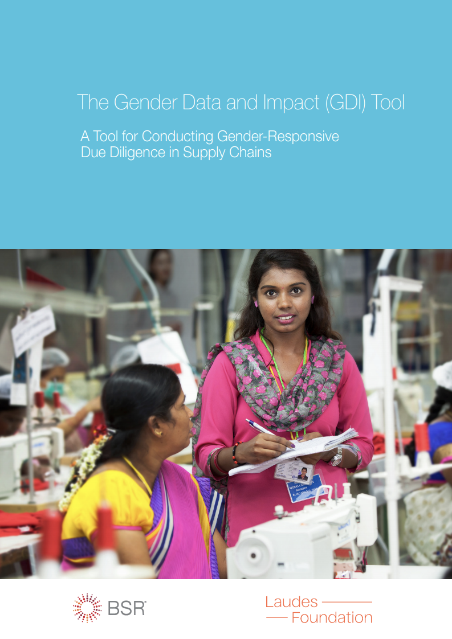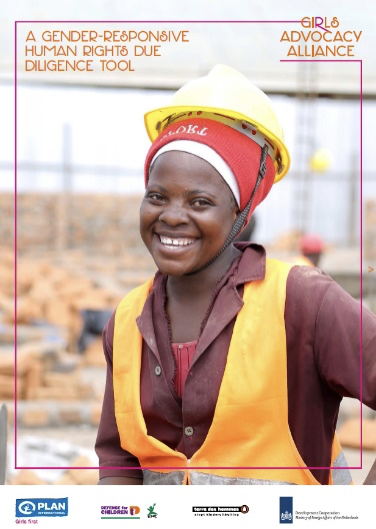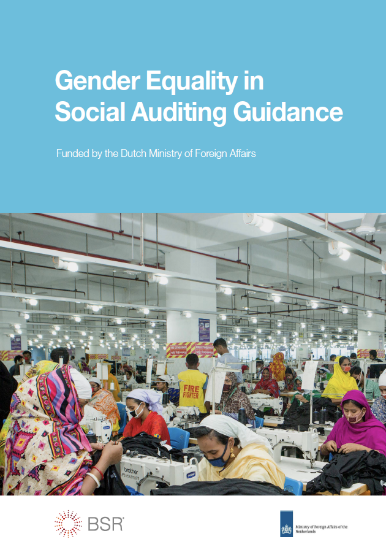In Steps 1-3 strong management systems were put in place, policies were added and revised, potential or actual risks were assessed and action was taken to mitigate or prevent any adverse impacts or potential impacts revealed by the assessment. This requires ongoing work to review and track the impact as well as determining whether the targeted actions have or have not had the desired effect. While this requires time and resources, it is important as it enables target setting and performance monitoring. Impact assessments should happen for both the actions a company takes itself, as well as for the ones taken by business partners and suppliers.
Tracking progress in a gender-responsive way means that a company is deliberate about including measurement goals that are disaggregated by gender. This could include, for instance, measuring the number of women in leadership positions, the number of women reached by trainings, or gender-differences in wage levels, and changes in those numbers over time. Furthermore, it means that not only is gender-disaggregated data collected, but that gender is considered in the analysis of that data to try to understand and address root causes of the gender disparities that the data reveals..
A multinational horticulture company procures its flowers from farms in Kenya. To optimise working schedules, the farm recently shifted the afternoon shifts to later in the evening. Understanding that this could have safety implications for the (women) workers when commuting back to their homes, the company ensured that transport was arranged from the farm to the villages at the end of the shift. To determine the impact of this measure, they ask the farm to track the proportion of workers that use this service. The farm reports that nearly 65% of workers use the transport service. Furthermore, there was no rise in cases reported. It is not clear why the percentage is not higher, but there have not been any complaints from workers, so the company assumes the other 35% has other preferred methods of transport home.
A multinational horticulture company procures its flowers from farms in Kenya. To optimise working schedules, the farm recently shifted the afternoon shifts to later in the evening. Understanding that this could have safety implications for the (women) workers when commuting back to their homes, the company ensures that transport is arranged from the farm to the villages at the end of the shift. To measure the impact of this measure, they ask the farm to track the proportion of workers that use this service, and report on these numbers disaggregated by gender. Additionally they verify if any cases of assault were reported through grievance mechanisms. The findings suggest that 65% of the workers use the transport service. Interestingly enough, they also find that the 35% that do not use the service are overwhelmingly women workers who have families. This sparks the interest of the company, as this was an unexpected outcome. They decide to investigate this further and analyse the findings with the farm and some of the workers. They find that most women need to go to the market after their shift, to buy food to cook for their families that evening. This market is halfway between the flower farm and the villages. Therefore, it did not help them to have a transport service to their village, as they had to make a stop at the market first. Knowing this, the company made a small adaptation. They added a 20 minute stop at the market, before returning the workers to their homes in the villages. Follow-up research shows that the take-up of the transport service is close to 100% and workers report they are very satisfied with the service.
Effective impact measurement starts before an action is implemented. Determining beforehand how success will be measured, what kind of gender-disaggregated data will be needed to measure success, and how this data will be obtained should be part and parcel of the preparation of any action.
Involving suppliers
For companies with elaborate international supply chains, which include a large number of suppliers, there is often little reliable gender-disaggregated data available at the supply chain level. Supplier management systems generally do not routinely gather gender-disaggregated data beyond overall company employment statistics. Social audits can be used as a mechanism to gain the insights needed at a larger scale, since they help to verify that suppliers are upholding the company’s minimum requirements. However, gender is addressed in very limited ways, if at all, in the standard auditing methodologies used.
Several improvements can be made to successfully turn social audits into a tool that is appropriate for collecting gender data and analysing gender issues. These include [1]:
- Adequate management systems: Companies should provide adequate managements systems to their suppliers to ensure data collection is easy, effective and efficient, and can be integrated into business-as-usual.
- Diverse audit teams: Research has shown that the gender of audit teams has a direct impact on general audit findings. Several gender-based distinctions seem to affect not only whether social auditors detect issues but whether these are reported as violations. Gender-diverse or all-women teams have proven to be more effective at identifying violations during social audits.
- Systematic auditor gender training: Uncovering issues deeply anchored in cultural and gender norms requires a nuanced and thorough understanding of the power structures and dynamics within which factories and workers operate. In practice, very little systematic auditor gender training is conducted to build the capacity of auditors on these topics.






